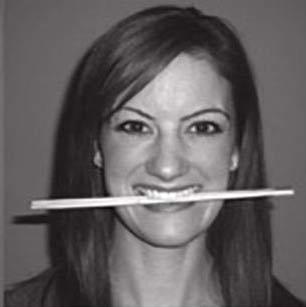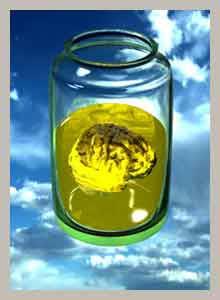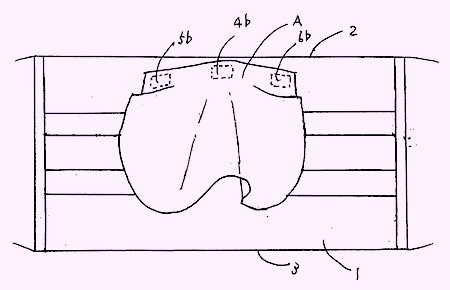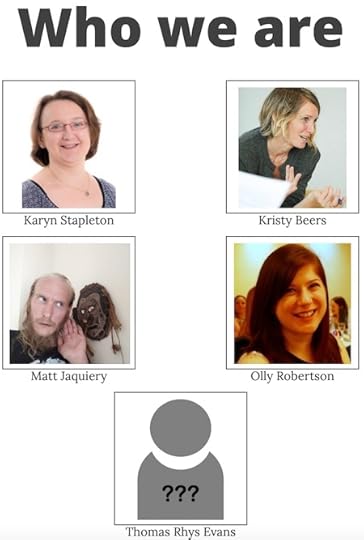Marc Abrahams's Blog, page 91
January 10, 2021
Podcast Episode #1050: “Bottle-Cork in Your Eye”
In Podcast Episode #1050, Marc Abrahams shows an unfamiliar research study to physicist Melissa Franklin. Dramatic readings and reactions ensue.
Remember, our Patreon donors, on most levels, get access to each podcast episode before it is made public.
Melissa Franklin encounters:
“Bottle-Cork Injury to the Eye: A Review of 13 Cases,” G.M. Cavallini, N. Lugli, L. Campi, L. Pagliani L, and P. Saccarola, European Journal of Ophthalmology, vol. 13, no. 3, April 2003, pp. 287-91.
Seth Gliksman, Production Assistant
Available on Spotify, Apple Podcasts, Overcast, Google Podcasts, AntennaPod, BeyondPod and elsewhere!

January 8, 2021
Alligators Bellowing in Heliox [Ig Informal Lecture]
Here is the Ig Informal Lecture by the winners of the 2020 Ig Nobel Acoustics Prize.
The Ig Nobel Prizes honor achievements that make people LAUGH, then THINK. In the Ig Informal Lectures, some days after the ceremony, the new Ig Nobel Prize winners attempt to explain what they did, and why they did it. [In non-pandemic years, the lectures happen at MIT, in Cambridge, Massachusetts, two days after the Ig Nobel Prize ceremony. But in the pandemic year 2020, it’s all happening online.]
The 2020 Ig Nobel Prize for Acoustics was awarded to Stephan Reber, Takeshi Nishimura, Judith Janisch, Mark Robertson, and Tecumseh Fitch, for inducing a female Chinese alligator to bellow in an airtight chamber filled with helium-enriched air. They documented that research, in this study:
“A Chinese Alligator in Heliox: Formant Frequencies in a Crocodilian,” Stephan A. Reber, Takeshi Nishimura, Judith Janisch, Mark Robertson, and W. Tecumseh Fitch, Journal of Experimental Biology, vol. 218, 2015, pp. 2442-2447.
Schedule
We are releasing The Ig Informal Lectures, one at a time, here on www.improbable.com, and on YouTube. Here are the release dates:
November 26th, 2020: Economics
December 3rd, 2020: Psychology
December 17th, 2020: Medicine
December 24th, 2020: Physics
December 31st, 2020: Entomology
January 7th, 2021: Acoustics
February 4, 2021: Materials Science

January 6, 2021
To Solve the Lipstick-Sticking-to-Facemask Problem
Two years before the Covid-19 pandemic existed, Ajikie Majima patented a way to solve a problem that would annoy millions of lipstick-wearers who want to also wear protective facemasks. That patent is:
“Mask Replacement Patch,” Ajikie Majima, Japan patent #3211488U, 2017.
Majima’s basic description of the invention: “Disclosed is a non-woven pleated mask that can be attached to a non-woven pleated mask that eliminates a gap near the upper side of the pleated mask and prevents a lipstick from attaching to a female mouth.”
Here’s further detail:
“PROBLEM TO BE SOLVED: To provide a patch to be attached to a non-woven pleated mask by eliminating a gap near the upper side of the non-woven pleated mask and preventing the lipstick from sticking to a woman’s mouth to cause discomfort. SOLUTION: This is a three-dimensional patch A that covers a nose and a mouth, and double-sided tape is attached to a central portion 4b and both end portions 5b and 6b near the upper part, and a non-woven pleated mask 1 has a face covering portion. It is used by mounting it at a position near the upper side 2. It has a three-dimensional shape by inserting scissors in the vertical center part of the backing cloth A, and by stuffing cotton in the upper seam allowance except for the central part, the upper side of the face covering part of the non-woven pleated mask 1 The gap between 2 and the backing cloth A can be eliminated. The material of the patch A is double gauze or organic cotton.”

January 3, 2021
Smiling and grimacing can reduce needle injection pain [study]
 Bearing in mind that the number of medical injections might soon be increasing, and that some find them painful, a question can arise – ‘What are the options for minimizing the pain of a medical injection?’ Have you considered holding a chopstick in your mouth (to induce a fake smile) or maybe grimacing?
Bearing in mind that the number of medical injections might soon be increasing, and that some find them painful, a question can arise – ‘What are the options for minimizing the pain of a medical injection?’ Have you considered holding a chopstick in your mouth (to induce a fake smile) or maybe grimacing?
Sarah Pressman, [not pictured, see note 1 below] who is Professor of Psychological Science at the University of California, Irvine, and Principal Investigator of the Stress, Emotion & Physical Health Lab (STEP) has co-authored a recent paper which describes experiments aimed at reducing needle injection pain – by manipulating facial expressions.
“Expression was covertly manipulated via cover story and chopstick placement in the mouth.”
The experiments also investigated ‘grimacing’.
“Together, these findings indicate that both smiling and grimacing can improve subjective needle pain experiences, but Duchenne smiling may be better suited for blunting the stress-induced physiological responses of the body versus other facial expressions.”
See: Smile (or grimace) through the pain? The effects of experimentally manipulated facial expressions on needle-injection responses Emotion, Pressman, S. D., Acevedo, A. M., Hammond, K. V., & Kraft-Feil, T. L. (2020)
Notes:
[1] The photo is from a previous study also involving chopstick smiles, and also co-authored by Professor Pressman : Contrasting Experimentally Device-Manipulated and Device-Free Smiles Front. Psychol., 15 October 2019.
[2] SmileSticks (an hygienic alternative to a chopstick, which were evaluated in the study above) can be purchased here
(an hygienic alternative to a chopstick, which were evaluated in the study above) can be purchased here
[3] The 2010 Ig Nobel Peace Prize was awarded to Richard Stephens, John Atkins, and Andrew Kingston of Keele University, UK, for confirming the widely held belief that swearing relieves pain.
Research research by Martin Gardiner

Podcast Episode #1049: “The M-through-Z of Social Dilemmas”
In Podcast Episode #1049, Robin Abrahams explores some of the engineering in a classic research study Dramatic readings and reactions ensue.
Remember, our Patreon donors, on most levels, get access to each podcast episode before it is made public.
Robin Abrahams encounters:
Etiquette, by Emily Post, 1942.
Seth Gliksman, Production Assistant
Available on Spotify, Apple Podcasts, Overcast, Google Podcasts, AntennaPod, BeyondPod and elsewhere!

January 1, 2021
The Enduring Appeal of Crunchiness
“Outside the academy, the paper [““] failed to generate any interest until 2008, when its authors were awarded the Ig Nobel Prize for Nutrition. The Ig Nobels are intended to “honor achievements that make people laugh, and then think,” but media coverage of Spence’s win focussed mostly on the former, with headlines that ranged from “boffin gives eaters sound advice” to “why research that?!” At first glance, the “sonic chip” experiment, as Spence fondly refers to it, does seem trivial. In reality, it was an elegant psychological trick, offering insight into the way the brain combines two separate sensory inputs—the crunching sound and the tactile oral sensation of a potato chip—into one multisensory perception. Spence lists the honor at the top of his curriculum vitae.”
—from the report “Accounting for Taste,” by Nicola Twilley, in The New Yorker magazine, October 26, 2015
Here is some detail from the study:

December 31, 2020
Entomologists Who Are Scared of Spiders [Ig Informal Lecture]
Here is the Ig Informal Lecture by the winner of the 2020 Ig Nobel Entomology Prize.
The Ig Nobel Prizes honor achievements that make people LAUGH, then THINK. In the Ig Informal Lectures, some days after the ceremony, the new Ig Nobel Prize winners attempt to explain what they did, and why they did it. [In non-pandemic years, the lectures happen at MIT, in Cambridge, Massachusetts, two days after the Ig Nobel Prize ceremony. But in the pandemic year 2020, it’s all happening online.]
The 2020 Ig Nobel Prize for Entomology was awarded to Richard Vetter, for collecting evidence that many entomologists (scientists who study insects) are afraid of spiders, which are not insects.
He documented that research, in this study:
“Arachnophobic Entomologists: When Two More Legs Makes a Big Difference,” Richard S. Vetter, American Entomologist, vol. 59, no. 3, 2013, pp. 168-175.
Schedule
We are releasing The Ig Informal Lectures, one at a time, here on www.improbable.com, and on YouTube. Here are the release dates:
November 26th, 2020: Economics
December 3rd, 2020: Psychology
December 17th, 2020: Medicine
December 24th, 2020: Physics
December 31st, 2020: Entomology
January 7th, 2021: Acoustics
January 14th, 2021: Materials Science

December 30, 2020
The Consortium for Research About Profanity
“Welcome to the Consortium for Research About Profanity,” says the Consortium for Research About Profanity, then pausing ever so slightly before explaining:
“The Consortium for Research About Profanity is a collection of researchers working on understanding how profanity functions in minds, between people, and across societies.”
Who are they? They are a lively bunch:

December 28, 2020
Recent progress in ‘Brain in a Vat’ studies
 Philosophers (and others) have been pondering the implications of the ‘Brain in a Vat’ conundrum for many years. Possibly longer. And the pondering has not stopped – here is a (partial) list of recent ponderings.
Philosophers (and others) have been pondering the implications of the ‘Brain in a Vat’ conundrum for many years. Possibly longer. And the pondering has not stopped – here is a (partial) list of recent ponderings.
● Do You Know That You Are Not a Brain in a Vat? Logos & Episteme, Volume 5, Issue 2, 2014, Pages 161-181
● Brain in a Vat Cannot Break Out Journal of Consciousness Studies, Volume 19, Numbers 1-2, 2012, pp. 126-142(17)
● A Moorean Response to Brain-in-a-Vat Scepticism Australasian Journal of Philosophy, Volume 80, 2002 – Issue 2
● I—How Both You and the Brain in a Vat Can Know Whether or Not You Are Envatted Aristotelian Society Supplementary, Volume 92, Issue 1, 2018, Pages 151–181
● How I Know I’m Not a Brain in a Vat Royal Institute of Philosophy Supplements, Volume 64
● How you know you are not a brain in a vat Philosophical Studies, volume 172, pages2799–2822(2015)
● Serious theories and skeptical theories: Why you are probably not a brain in a vat Philosophical Studies, volume 173, pages1031–1052(2016)
BONUS FACTOID : Steve Martin, who starred in the 1983 movie ‘The Man With Two Brains’ (one of which was in a vat) studied philosophy at California State University, Long Beach.
Research research by Martin Gardiner
BONUS (Unrelated): VAT

December 27, 2020
Podcast Episode #1048: “Stress Analysis of a Strapless Dress”
In this Podcast Episode #1048, Marc Abrahams and Nicole Sharp analyze the engineering and the art of “Stress Analysis of a Strapless Evening Dress”. Dramatic readings and reactions ensue.
Remember, our Patreon donors, on most levels, get access to each podcast episode before it is made public.
Nicole Sharp & Deborah Henson-Conant encounter:
Seim, Charles E. (1956). ‘Stress Analysis of a Strapless Evening Gown.’ The Indicator November
Seth Gliksman, Production Assistant
Available on Spotify, Apple Podcasts, Overcast, Google Podcasts, AntennaPod, BeyondPod and elsewhere!

Marc Abrahams's Blog
- Marc Abrahams's profile
- 14 followers





